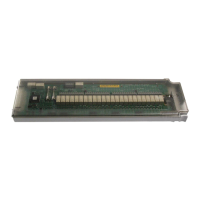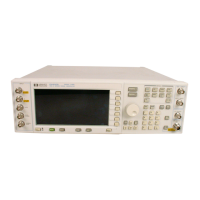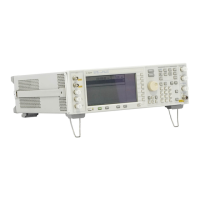1-86
Troubleshooting
Overall Description
A18 CPU
The A18 CPU controls all activities in the signal generator:
• translating information entered from the front panel keys, LAN, GPIB, or Auxiliary Interface
(RS–232) into machine level instructions
• communicating translated instructions on the internal buses
• monitoring critical circuits for problems, such as unleveled and unlocked conditions
• reporting (on the front panel display) any problems with critical circuits
Input/Output Interface
Front Panel
The signal generator accepts inputs through the front panel hardkeys and the display softkeys, and
provides outputs on the front panel display, and through the RF output connector and rear panel
connectors. Depending on the model, features, and options, the front panel can also contain
modulation input/output BNC connectors. In some cases, connectors may be installed but not
operational (if the option associated with that connector is not also installed).
When line voltage is present and the signal generator is in standby mode, the amber LED above the
power switch lights. When the signal generator is in power–on mode, the green LED (also above the
power switch) lights.
Hardkeys/Softkeys The front panel has two types of keys:
Hardkeys are dedicated to specific functions, entering values for the most commonly used features,
and controlling the display’s contrast and intensity.
The front panel keypad uses a row and column configuration. Pressing a key makes a connection
between a row and column. The row and column information is routed to the A18 CPU where it is
interpreted, and the corresponding function executed.
Softkeys, located along the display, are used to select the function displayed to the left of the key (on
the display). When a softkey is pressed, the displayed function changes.
A2 Display An LCD provides information about the instrument's settings and condition. The LCD
requires a power supply, lighting, and data:
• The A4 inverter converts dc voltage to the ac voltage required by the display.
• A back–light (a bulb powered by the A4 Inverter) lights the display so that information is visible.
• The A18 CPU generates data, which is routed to the LCD through the A3 Power Switch
assembly.
RF Output Connector On 20 GHz instruments, the RF output connector is an APC 3.5 male or
Type–N (Option 1ED). On 40 GHz instruments, the RF output connector is a 2.4 mm male. Option
1EM moves all front panel connectors to the rear panel.
Rear Panel
The rear panel contains the power line module, LAN, GPIB, RS–232, and A20 source module
interface (SMI), scalar interface, and BNC connectors used for sweep interface. Depending on the
model, options, and features, additional BNC connectors are provided on the rear panel. In some
cases connectors may be installed but not operational if the option associated with that connector is

